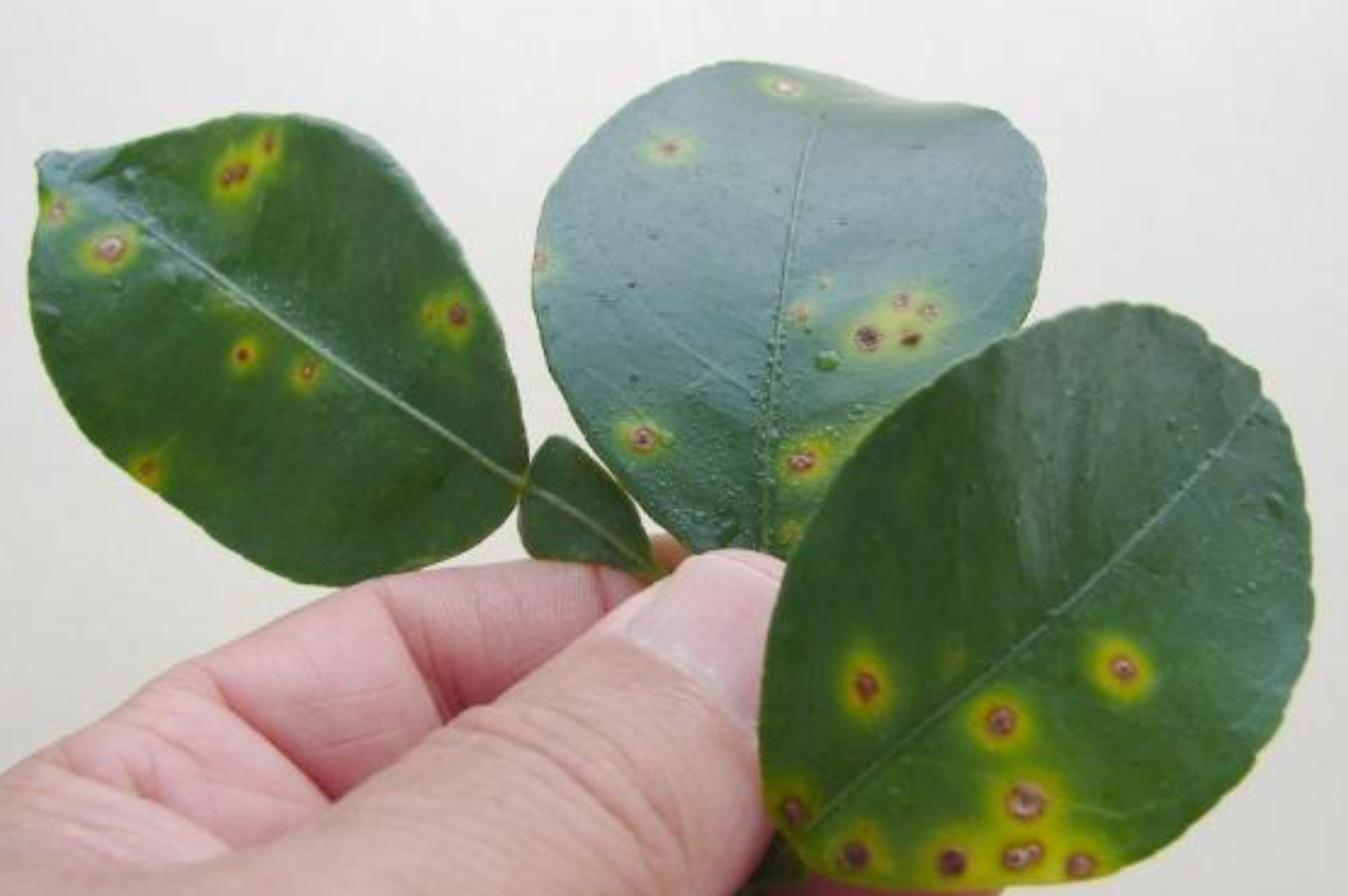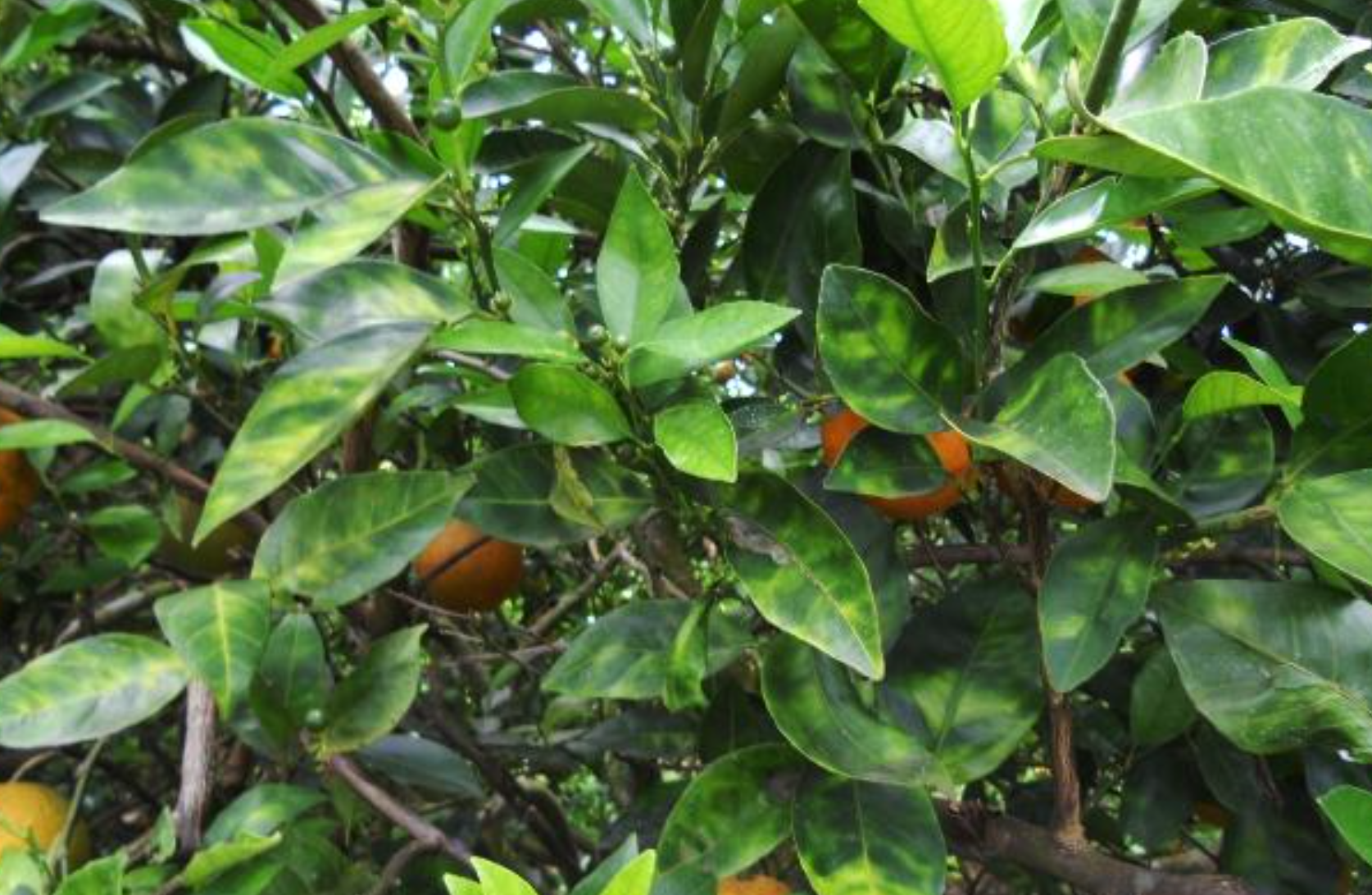
Florida’s citrus producers, as well as backyard growers have battled detrimental issues like hard freezes and storm damage over the years. However, in recent years, emergent bacterial diseases known as citrus canker and citrus greening have been devastating Florida’s citrus crops. Although these diseases are not yet a major issue in the Panhandle, it’s important to be aware of the characteristics of these diseases.
Citrus Canker
In 2013, the first case of citrus canker in the Florida Panhandle was found in southern Santa Rosa County. Citrus canker is usually produced under moist conditions and easily dispersed by windblown rains. The bacterium either enters through the leaves or fruit, especially through a wound. Damage from the citrus leafminer is a notorious origin of the disease. Symptoms will appear as tiny blisters on both sides of the leaves. As time goes on, the blister will turn into pronounced, raised brown rings. In severe cases, the condition can appear on stems and fruit (Figure 1).
Citrus canker can be spread by contact with clothes and pruning equipment, so its important to sanitize field equipment after any thought of possible contact. There is limited chemical control for citrus canker, but a copper compound fungicide will help stifle the condition.
Citrus Greening
Another condition known as citrus greening or HLB (Huanglongbing), is particularly a menace to citrus groves in South Florida. Citrus greening is caused by an insect known as the Asian citrus psyllid. In 1998, the insect was found in a few counties on the east coast of Florida. By 2001, the insect had been found in 31 counties, nearly half the state.
Citrus greening works a bit differently than citrus canker. As the psyllid feeds on the leaves of the tree, the bacterium is released. The bacterium lives and thrives in the tree’s phloem. The phloem is the living tissue of the tree that transports nutrients throughout. Unfortunately, once infected, the tree will steadily decline in health. Fruit production will drop in number, size and taste each year until the demise of the tree. Sadly, there are no commercially avaiable citrus species that are immune to the bacterium.
Symptoms of citrus greening often begin by the yellowing of the leaves along the veins. A green tie-dye look to the leaves is a typical sign (Figure 2). To make matters worse, it’s difficult to diagnose. These symptoms can easily be confused with nutrient deficiency. Lab analysis is required for accurate identification. There are no chemical treatment options either, only methods to keep the condition from spreading. A non-systemic pesticide like malathion or neem oil, a less toxic repellent, can help combat the spread of the disease.
Citrus canker and citrus greening are serious diseases that threaten Florida’s citrus crop. Controlling the source of the bacterium is extremely important. Keep in mind that the most common vector regarding the spread of these diseases is humans transferring citrus from one region to another.
For more information, please visit the UF Citrus Research and Education Center website, or contact your local county extension office.
Supporting information for this article can be found in the UF/IFAS EDIS publications:
- “Citrus Problems in the Home Landscape” by Mongi Zekri and Robert E. Rouse
- “Citrus Canker & Greening (HLB) – Handling Protocols for Master Gardener Plant Clinics” by Megan M. Dewdney, Timothy M. Spann, Ryan A. Atwood, Jamie Burrow
- “Citrus Canker Found in Northwest Florida“ by Blake Thaxton
An Equal Opportunity Institution. UF/IFAS Extension, University of Florida, Institute of Food and Agricultural Sciences, Nick T. Place, Dean for UF/IFAS Extension. Single copies of UF/IFAS Extension publications (excluding 4-H and youth publications) are available free to Florida residents from county UF/IFAS Extension offices.

